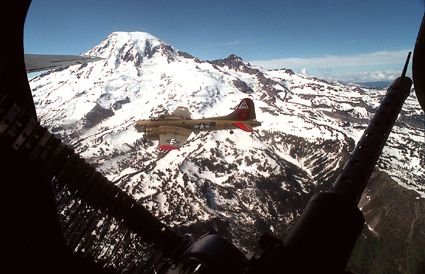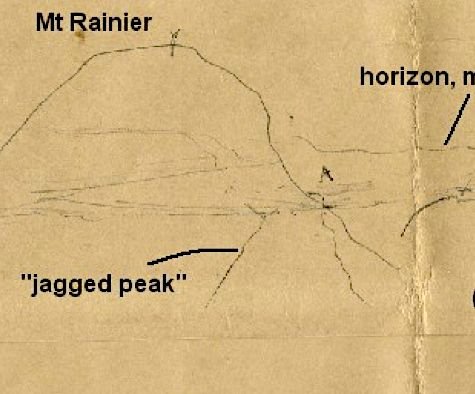No ... That is not the sketch that Shough is discussing at that point in his document. Shough is discussing a sketch for which there's a tangible specimen - a sketch that was definitely done by Arnold on a manila envelope which eventually ended up in CUFOS' files.
I have discovered some archive correspondence of my own regarding this very question and it might now provide an answer.
I had a vague memory of same and eventually now realised where it might still exist.
I thought it was from personal email and couldn't find any trace, however, it was on my 'UFO Research List' forum and I have been able to retrieve a copy.
Martin Shough was a subscriber and I wonder if this is also his source.
In reply to my enquiry, querying if anyone might know the origin of the sketch, Brad Sparks replied:
Date: 12 Feb, 2000
Subject: Re: Re:Kenneth Arnnold and the Ho-IXStatus:
James,
An important new piece of evidence in the Arnold case may help to resolve this question at least.
See COMMENTS below.
Any interview material on Arnold is of importance so I would greatly appreciate it if you could post a copy or supply a copy of the Chenowith (Chenoweth?) 1956 interview.
Brad.
In a message dated 2/11/00, James Easton wrote:
I've recently come across some little-known material re the story. It's a letter dated 5 August, 1956 from Maurene Chenowith to Isabel Davis, following the former's interview with Arnold.
Chenowith notes how Arnold has given up on his investigations into 'flying saucers', although he still believes in their existence.
She writes:
"On his own sightings he has seen saucers five separate times and he has made movies of them. One flew under him at Mt. Lassen and he got a movie of that. He says the movies are good.
In his original sighting, a fact that he didn't mention was that one of the nine was slightly larger than the other eight".
(End of quote)
However, in his book, Arnold claims, "I proceeded to gather my scattered wits together, got back in my airplane, and took off for Pendleton, Oregon. I remembered that I had forgotten to mention the fact that one of these craft looked different from the rest, was darker and of a slightly different shape...".
Was it merely slightly larger, or was it only different in shape, or both?
It's a question which I'm surprised was never resolved before Arnold's recent death. I'm sure he would have been able to clarify this.
James.
(End of my original post)
________________________________________
COMMENTS: Mark Rodeghier, CUFOS director, just confirmed on Wednesday that the light-gray hand drawing on the front cover of IUR for March/April 1995 is an early Arnold drawing in pencil on file at CUFOS, done on an envelope of his Great Western company possibly in the late 40's or early 50's.
I had been inquiring around about the drawing and had separately found out from Pierre Lagrange that he had found an envelope at CUFOS with an Arnold drawing - which turned out to be the IUR cover.
This Arnold drawing is the only known Arnold drawing of the objects' flight path.
It also includes drawings of the objects' shapes (which are known however from his letter to the AAF, newspaper articles, etc.). But this drawing seems to be the only one where Arnold draws both the singular object and the shape of the remaining 8 so that they may be compared.
It turns out the bat-shaped singular object is about 15-20% wider than the manta-shaped other eight objects, and that is the longest dimension.
However, the bat-shape is also about 40% shorter, too. So perhaps Arnold had difficulty deciding in his mind what to say about the relative sizes because it depended on which dimension.
Brad.
(END)
I am now more confused than before.
So, the pencil sketch drawing is from our known envelope and actually dates from late 1940s or early 1950s, not the the 24th or 25th June, 1947?
Separately, the sketch I have been trying to source was discovered by Pierre Lagrange and also originates from an old envelope?
It was used as a basis for the IUR cover.
What about the sketch apparently drawn by Arnold on the 24th or 25th - is this it?
I have additionally found that I explained the sketch:
"Featured on an obscure German produced video about 'UFOs', with a voice-over by Arnold when this picture is shown".
It must therefore have been known about for some time previously.
As you will note, some 20 years ago, I seem to have uncovered a letter to Isabel Davis!
I have no recollection of this and naturally following it up.
Likewise, some other case material now rediscovered from those archives.





